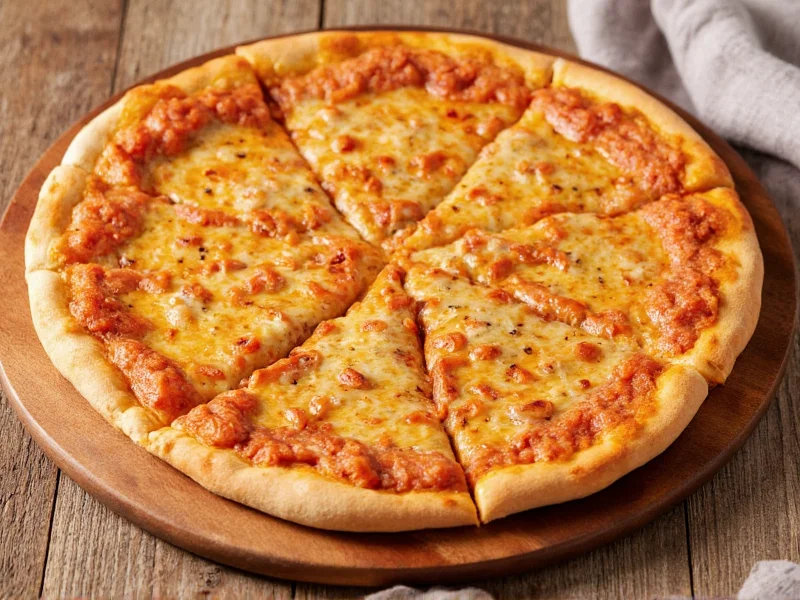The Culinary Science Behind Pizza and Red Pepper Flakes
Red pepper flakes contain capsaicin, the compound responsible for their heat, which interacts uniquely with pizza's components. When sprinkled on finished pizza, the flakes release aromatic oils that complement tomato acidity while cutting through cheese richness. This creates a balanced flavor profile where the heat enhances rather than dominates.
Italian culinary tradition recognizes this synergy, with many regional pizza styles incorporating controlled heat elements. The practice dates back to Southern Italy, where dried chili peppers were readily available and used to preserve food while adding flavor. When Italian immigrants brought pizza to America, red pepper flakes became a staple in pizzerias, particularly in New York-style establishments.
Types of Red Pepper Flakes for Pizza
Not all red pepper flakes are created equal for pizza application. Understanding the differences helps achieve optimal results:
| Type | Heat Level (SHU) | Flavor Profile | Best Pizza Pairings |
|---|---|---|---|
| Cayenne-based | 30,000-50,000 | Sharp, immediate heat | Meat-heavy pizzas, pepperoni |
| Crushed Calabrian | 15,000-25,000 | Fruity, complex heat | Vegetarian pizzas, margherita |
| Chipotle powder blend | 5,000-10,000 | Smoky, subtle warmth | BBQ chicken pizza, white pizzas |
Optimal Application Techniques
Professional pizzaiolos follow specific guidelines for red pepper flakes usage:
Timing Matters Most
Adding red pepper flakes after baking preserves their volatile aromatic compounds, delivering brighter flavor. When sprinkled before baking, the intense oven heat causes the essential oils to evaporate, leaving primarily heat without the nuanced flavor. For deep-dish or thick-crust pizzas, consider adding half before baking and half after to achieve layered heat.
Proper Measurement
The ideal amount varies by pizza size and personal preference:
- Personal pizza (10-inch): 1/8 to 1/4 teaspoon
- Medium pizza (12-inch): 1/4 to 1/2 teaspoon
- Large pizza (14-inch): 1/2 to 3/4 teaspoon
- Extra-large (16-inch): 3/4 to 1 teaspoon
For best results, use your fingers to distribute flakes evenly rather than shaking from a container, which creates uneven hot spots.
Advanced Red Pepper Flakes Applications
Going beyond simple sprinkling can elevate your pizza experience:
Infused Olive Oil Technique
Create red pepper flake oil by combining 1/4 cup extra virgin olive oil with 1 teaspoon flakes in a small jar. Let sit at room temperature for 24-48 hours, then strain. Drizzle this infused oil over finished pizza for distributed heat without texture interference. This method works particularly well for gluten-free pizza crust alternatives that benefit from added moisture.
Flake and Cheese Integration
Mix red pepper flakes directly with grated cheese before applying to pizza. The fat content in cheese helps distribute heat evenly while mellowing the intensity. This technique proves especially effective for family pizza night with varying spice tolerance, allowing customization during serving.
Avoiding Common Red Pepper Flakes Mistakes
Even experienced pizza enthusiasts make these errors:
- Over-shaking containers - Creates concentrated hot spots rather than even distribution
- Poor storage - Exposure to light and air degrades flavor compounds within weeks
- Using expired flakes - Loses aromatic complexity while retaining heat intensity
- Ignoring regional pairings - Certain flakes complement specific pizza styles better than others
Store red pepper flakes in an airtight container away from light and heat. Properly stored, they maintain optimal flavor for 6-8 months. For authentic Neapolitan pizza experience, use freshly crushed flakes rather than pre-ground containers.
When Red Pepper Flakes Enhance Specific Pizza Styles
Different pizza varieties benefit from strategic red pepper flake application:
- NY-Style: Sprinkle lightly after baking for that classic pizzeria finish
- Chicago Deep Dish: Incorporate into the sauce layer for integrated heat
- Neapolitan: Use sparingly on finished pizza to honor traditional preparation
- White Pizza: Mix with olive oil before baking for subtle warmth
- Vegan Pizza: Compensates for lack of meat flavors with aromatic complexity
For pizza with delicate toppings like prosciutto or fresh mozzarella, use milder Calabrian flakes to avoid overwhelming subtle flavors. When serving pizza to children or spice-sensitive guests, provide flakes on the side for individual customization.
FAQ: Red Pepper Flakes and Pizza
When is the best time to add red pepper flakes to pizza?
The optimal time is immediately after baking. Adding red pepper flakes post-baking preserves their volatile aromatic compounds, delivering brighter flavor. When sprinkled before baking, the intense oven heat causes essential oils to evaporate, leaving primarily heat without nuanced flavor.
How much red pepper flakes should I use per pizza?
For a standard 12-14 inch pizza, use 1/4 to 1/2 teaspoon of red pepper flakes. Personal pizzas need only 1/8 teaspoon, while larger 16-inch pizzas can handle up to 1 teaspoon. Always distribute flakes evenly using your fingers rather than shaking from a container to avoid concentrated hot spots.
Do red pepper flakes lose potency over time?
Yes, red pepper flakes gradually lose their aromatic complexity while retaining heat intensity. Properly stored in an airtight container away from light and heat, they maintain optimal flavor for 6-8 months. For best results with pizza, use freshly crushed flakes rather than pre-ground containers that have been open for extended periods.
Can I use red pepper flakes with all pizza styles?
While red pepper flakes work with most pizza styles, the application method varies. NY-style benefits from post-baking sprinkling, Chicago deep dish works better with flakes incorporated into the sauce layer, and Neapolitan pizza requires sparing use to honor traditional preparation. White pizzas and vegan pizzas particularly benefit from red pepper flakes' aromatic complexity.
What's the difference between red pepper flakes and cayenne pepper on pizza?
Red pepper flakes contain both seeds and fruit of the chili pepper, providing texture and complex flavor with moderate heat. Cayenne pepper is a fine powder made solely from the fruit, delivering more intense, immediate heat without texture. For pizza, red pepper flakes offer better flavor distribution and visual appeal, while cayenne provides more consistent but less nuanced heat.











 浙公网安备
33010002000092号
浙公网安备
33010002000092号 浙B2-20120091-4
浙B2-20120091-4